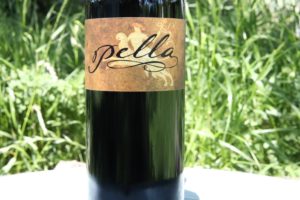
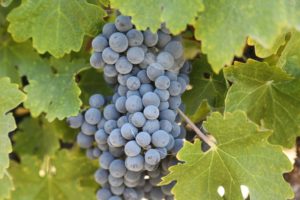
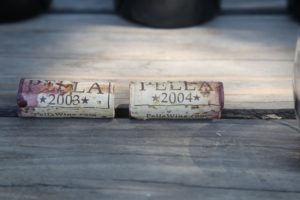 KNA Wines. Building a wine brand is an acute lesson in patience. For those who are privileged to truly start from scratch in the Napa Valley, its 3-5 years waiting for vines to mature after planting, for red wines, another several years aging and then perhaps up to a year in bottle. But there are a very select few in Napa Valley who age their wines even longer. KNA is one of these.
KNA Wines. Building a wine brand is an acute lesson in patience. For those who are privileged to truly start from scratch in the Napa Valley, its 3-5 years waiting for vines to mature after planting, for red wines, another several years aging and then perhaps up to a year in bottle. But there are a very select few in Napa Valley who age their wines even longer. KNA is one of these.
From 2002 through 2007, winemaker Kristof Anderson produced 100% varietal Cabernet Sauvignon from the Star Vineyard in Rutherford (located next to and just south of La Luna Market) bottled under the Pella brand. The vineyard was founded by Reg Oliver (El Molino Winery) and Ric Forman (Forman Vineyards) and was managed by David Abreu. While Pella no longer sources from this vineyard several producers still make wine from here including B Cellars and Provenance.
The plan for these wines was to age them further but perhaps he and his wife Jennifer did not expect the wines to have this much age before they were released. As they told us – kids, house projects and life’s twists and turns took priority, all the while these wines continued to age. With wines from most producers typically following a rough timeline from bottling to release date, it is refreshing to discover a producer that truly enjoys aged wines and for a variety of reasons, were able to hold these vintages for an extended time before releasing them.
The world changes, and so do the wines – especially when they have 13-18 years of aging on them. We are reminded of an André Tchelistcheff story as told to us by former Beaulieu Vineyard winemaker Joel Aiken. Joel recalled Andre visited Beaulieu Vineyard at age 89 in 1990, some 16 years after leaving a 36-year career there which began in 1938. The winemaking team was proudly showing him the winery and traditional winemaking practices (including older American oak barrels) that in part Andre setup back when he was working at Beaulieu Vineyard. Andre remarked, something like, “it has been 17 years since I have worked here, I have changed, why haven’t you”.
And Kristoff’s own winemaking style has evolved over the years – admittedly from his role as co-founder, winemaker and vineyard consultant for SCRIBE Winery in neighboring Sonoma County. His harvest decisions at SCRIBE began to trend earlier in the year after he began making lower alcohol Riesling and Pinot Grigio – harvesting at lower brix ranges then he was used to. He told us his winemaking early in his career was more textbook like but later, based on additional experience, he gained the perspective and confidence to make earlier harvest decisions.
Wheaton College, IL
Kristof and Jennifer met at Wheaton College in Illinois neither yet knowing what career path they would take. Kristof majored in economics and art while Jennifer was an English literature major. This small college Christian Liberal Arts school was founded in 1860. This was the first college in Illinois to graduate African American students in 18656. And it is home to the Billy Graham Museum, arguably their most famous alumni.
After Kristof was accepted to the Culinary Institute of America (never attended) he moved to northern California to be closer to Jennifer. His introduction to Napa Valley came through his father who remarkably was a college roommate with future Napa Valley vintner, Art Finklestein (Judd’s Hill Winery) at USC. Kristof’s father told him to talk to Art who then instructed him to call Justin Meyer, winemaker and co-founder at Silver Oak. So, he did, but Silver Oak was still so small that they were not hiring harvest interns. Justin then told Kristof to meet with Gary Andrus at Pine Ridge.
Not quite sure where to place a new hire with a college degree with absolutely no winemaking experience, Kristof ended up working as Pine Ridge Winery’s bottling supervisor. This was his first job in Napa Valley in 1992. Later he worked at ETS Laboratory in St. Helena where he met numerous winemakers who brought their samples into the lab in person – making some valuable contacts during his time there.
In addition to his role at SCRIBE Cellars, he is also the founding winemaker at Gargiulo Vineyards where he has been making their wines since 2004.
Select Wines
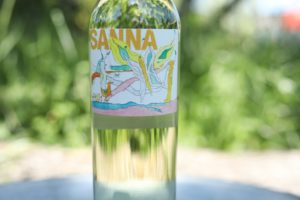
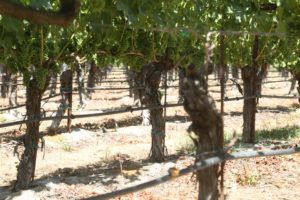
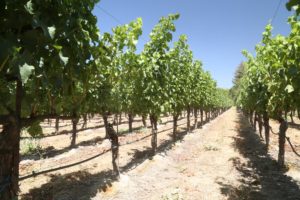 Sauvignon Blanc
Sauvignon Blanc
Kristof produced vintages of Sauvignon Blanc from a vineyard just west of Etude Winery on the Napa side of Carneros in 2017 and 2018 but never released these commercially. The productions were small and initially reserved for friends and family. The 2019 SANNA was released (named after their daughter) and is 100% varietal Sauvignon Blanc. It was fermented slow and cold with primary fermentation finishing around 4+ weeks. It saw no oak, rather it was fermented and aged entirely in stainless steel and fermented completely dry (no residual sugar). This bottling shows captivating aromatics including pear and apple. Very balanced across the palate with flavors of kiwi and gooseberry and a citrus zest. Crisp but not overtly tart. Very refreshing. Only 25 cases produced.
The 2021 SANNA Sauvignon Blanc is medium to deep straw in color; the aromatics are immediately inviting and show notes of honeysuckle, citrus blossom, yellow pineapple, guava and jasmine. This wine is true to the variety and a cooler weather site; both characteristics showing because the grapes for this wine were not allowed to overly ripen at the time of harvest. The palate offers flavors of grapefruit, kiwi, lemon/lime, green apple and some grassy notes. Its texture is rounded from start to finish; leaves a lingering mouthwatering brightness of acidity which begs another sip. Production has increased since the initial vintage; 75 cases of this wine were produced. The pink hand-dipped wax is a nice touch.
The catchy and colorful label was designed by Kristof’s sister-in-law, Katherine Lee Anderson. And the wine was bottled with a glass vino seal.
Cabernet Sauvignon
The following wines were cold soaked for 3 days before inoculated with yeast. Malolactic fermentation occurred naturally (no nutrient addition) starting later in the following year. The wines were aged in 100% new French oak (Demptos reserve barrels) for 2 years before being bottled. Only 3 or 4 barrels were produced each year.
The 2003 PELLA Cabernet Sauvignon is briary on the bouquet with sweeter fruit driven aromatics including ripe blackberry and plum. The texture is a highly appealing characteristic of this wine – time has smoothed out the tannins giving them a polished feel. Supple with a light tension across the palate, the wine is seamless from start to finish. Notes of plum, olive and leather. And still showing brightly on the finish. Lingers with integrated tannins and red fruit notes. This is perhaps the favorite of their older wines we tried.
The 2004 PELLA Cabernet Sauvignon is dark garnet with brickish red hues in the glass; this bottling offers a very sweetly fruited aromatic union of both riper fruits and holiday spices. Its scents include notes of black licorice, prune, cassis, cherry liqueur, cardamom, clove and sweet pipe tobacco spice. It offers a bit more density on the palate than the 2003 and is very well layered. The palate is juicy and mouthwatering with flavors of blackberry, prune and ripe black cherry. Some of the baking spices on the bouquet are echoed on the palate; it lingers with long-lasting but well-rounded integrated tannins along with a perceptible and final note of dried tobacco leaf.
The 2005 PELLA Cabernet Sauvignon is dark ruby in color; the bouquet reveals darker tertiary aromatics including of forest floor, mushroom, tar, old leather and a light wood spice along with bramble and blackberry. The bouquet doesn’t ‘jump’ out at your like the ‘sweeter’ aromatics of the 2004 vintage. This bottling shows plenty of dark fruit across the palate including blackberry, dark plum and cherry. The tannins feel like they may have one time been fairly robust but 17 years later at the time of our tasting, they present themselves with a rounded density. They are chalky and still long-lasting. This wine has an enviable texture; it is harmonious across the palate.
The 2006 PELLA Cabernet Sauvignon is deep ruby in color; the bouquet immediately reveals aromas that one could pick out in a blind tasting lineup against all the other PELLA wines. Offers a sweet note including honeycomb, cinnamon stick, mocha, coffee, toffee, caramel and a note of vanilla. For reference, we have tried this wine several times over the years, the most recently being 18 years post vintage. The palate offers balanced acidity, with flavors of blackberry, dark cherry, boysenberry, Pakistani yellow mulberries, milk chocolate, and toffee. Mouthwatering. The tannins on this wine for many years were also markedly different than the earlier vintages; they were more tightly woven with a long-lasting grip. Their grip has been tamed by time in the bottle and now sport a finely-polished rounded texture with a dusty/chalky character that lingers for some time, showing more on the front of the palate than the rear. This wine has held up quite well during its nearly 2 decades since its harvest.
The 2007 PELLA Cabernet Sauvignon offers diverse aromatics including hints of black fig, raspberry and licorice. As the wine continues to breathe, opens to darker fruits and wafts of brown chocolate. Of the 5 wines we tried in the vertical, this is of course the youngest, but it also tastes the youngest as well. Great acidity – a juiciness if you will on the palate. Needs some time to open. Lingers with bright red fruits, a very subtle hint of mocha and long-lasting tannins with medium grip.
Star Vineyards, Rutherford
Pella, Greece
Kristof and Jennifer chose the name PELLA for their Cabernet Sauvignon brand in honor of their first-born daughter, Pella who was born right around when Kristof began producing these wines. Pella is a Swedish name (chosen in honor of Kristof’s heritage). Pella is also an ancient city in northern Greece located about an hour drive from Thessaloniki (which has an international airport) and was the capital of the ancient Greek Kingdom of Macedon. Pella was founded at the end of the 6th century B.C.
Alexander III of Macedon (Alexander the Great) was born in the palace at Pella; in 330 B.C., he destroyed Persepolis, located in modern-day Iran, once the capital city of the Persian empire. Pella was a place of refuge, sheltering Jewish Christians in 70 A.D. And it is known for its ornate mosaic pebble floors; the label for KNA’s Pella Cabernet Sauvignon depicts an ancient mosaic of Dionysus riding a panther; this original mosaic is estimated to date from the late 4th century B.C. and is displayed on the first floor within the museum. At its height, it was a major economic, political and cultural center.
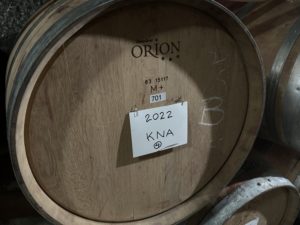 Those who come to Pella can visit both the Archaeological Museum of Pella and the ancient city of Pella. One ticket purchased at either site provides access to both locations. The museum encompasses two floors; guests typically start their visit by viewing a short film about Pella’s history. The collection contained within the museum is impressive, from several original mosaics, to coins, beautiful jewelry, ceramics, bronze pieces and a variety of marble sculptures. And yes, winemaking did occur in ancient Pella with several related exhibitions contained within. A small cafe located on the first floor serves up very basic foodstuffs.
Those who come to Pella can visit both the Archaeological Museum of Pella and the ancient city of Pella. One ticket purchased at either site provides access to both locations. The museum encompasses two floors; guests typically start their visit by viewing a short film about Pella’s history. The collection contained within the museum is impressive, from several original mosaics, to coins, beautiful jewelry, ceramics, bronze pieces and a variety of marble sculptures. And yes, winemaking did occur in ancient Pella with several related exhibitions contained within. A small cafe located on the first floor serves up very basic foodstuffs.
Although not much physically remains of this ancient city one can get an idea of just how large its footprint was by wandering the ancient streets. At its height it encompassed some 1,000 acres with a massive defensive wall, three meters thick surrounding the city. Highlights include several restored columns along with pieces of original columns from what was the largest house in Pella (the Dionysus House constructed between 325 and 300 B.C.) and is also where a number of prominent mosaics were removed including the Dionysus mosaic.
The Agora was a massive rectangular building covering 10 city blocks and was dedicated to both workshops and shops including foods, beverages, metals, terracotta and perfumes among other goods. Archeological excavations produced evidence that Pella traded with the rest of Greece and people living in the Black Sea, northern Africa and Italy, to name but a few.
The citizens of Pella were fairly affluent and enjoyed the conveniences of a well-organized city including extra-wide streets (and the largest of them, a 45-foot-wide boulevard which cut through roughly the center of the city) which were paved and connected to footpaths leading to the nearby port, a sewer system including drainage and a well-built water supply system. The royal palace stood on what was called the nearby Citadel Hill and covered approximately 15 acres. It was the center of all the financial, administrative and military services.
Pella was originally a port city connected to the coast but over the century’s soils have washed down from the mountains and completely filled in the lowlands. Today Pella is nowhere near the coast with the closest coastline about a 40–45-minute drive away. Throughout its history it experienced several significant events including being ransacked by the Romans who removed numerous riches and bought them to Rome and was destroyed by an earthquake but then rebuilt.
Excavations began in the 1950s and continue today. Tombs continue to be discovered in and around the city including in 2006 when a farmer accidentally discovered what has been the largest Greek tomb to date.
Nearby modern-day Pella is worth a stop to walk around the center of town. Highly recommended is a visit to the family run The Lemon Restaurant, serving delicious and authentic Greek food. And the surrounding landscape is primarily used for agriculture including cotton (some of the roads are lined with cotton late in the season after harvest), cherries and other stone fruits. And for those who want to explore a bit further afield, the Pozar Thermal Baths are about an hour drive from Pella.
Pella Archaeological Museum
Pella Ancient City
Pella
Future wines from KNA will always be small production sourced from interesting and unique vineyards within Napa Valley.
Collectors take note; with both a fine vineyard and winemaker pedigree, such limited production, and a rare current release featuring wines with extended aging, these wines won’t last long.
Those interested can purchase vintages through their website – for more information, visit: www.knawine.com or www.pellawine.com







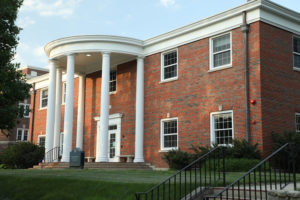
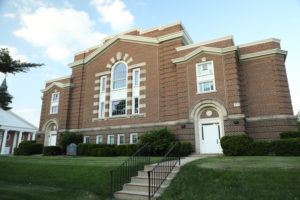
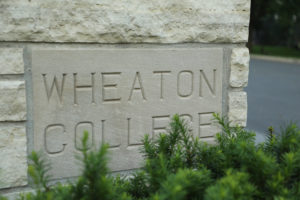
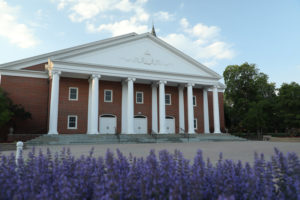
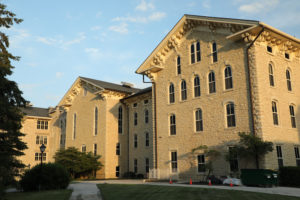
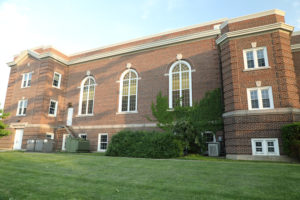
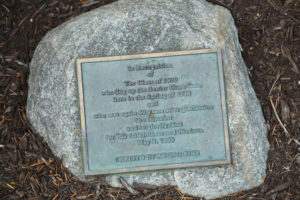
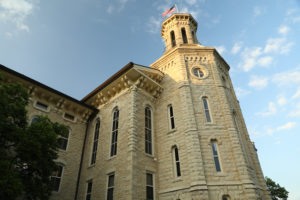
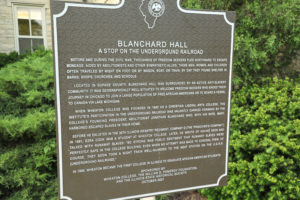

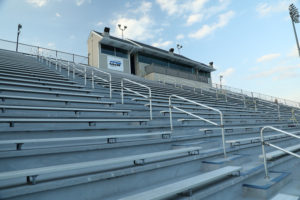
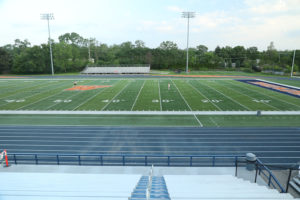


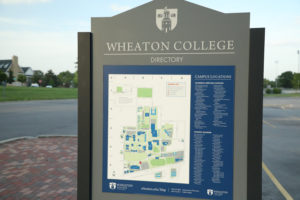




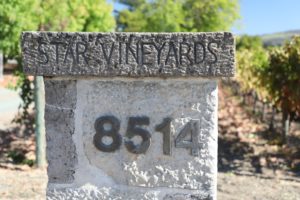
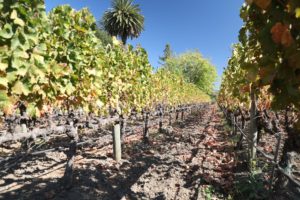
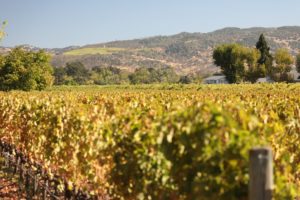
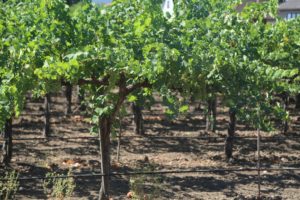
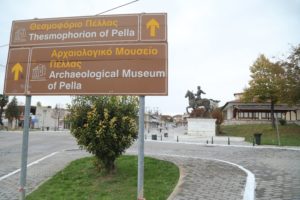
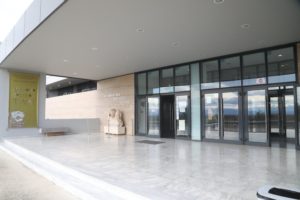
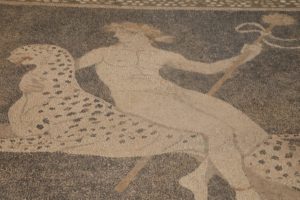

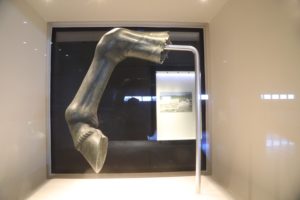
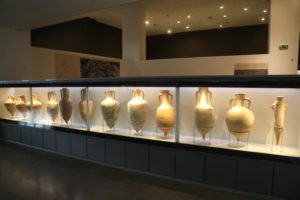
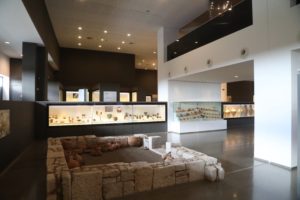
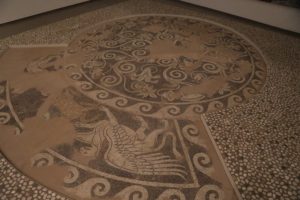
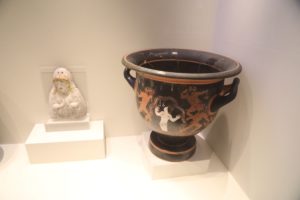
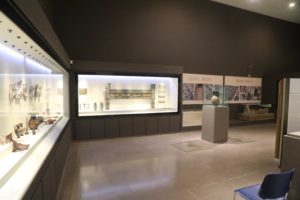
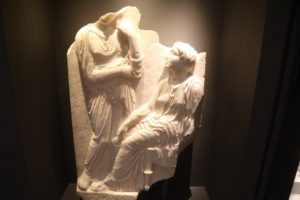
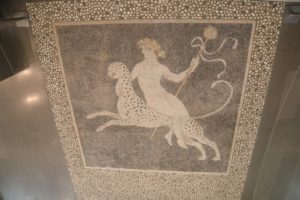
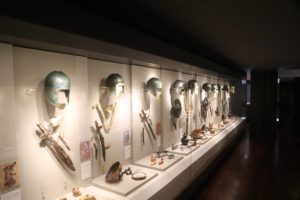
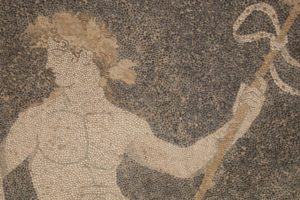
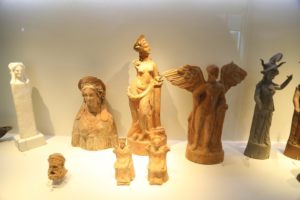
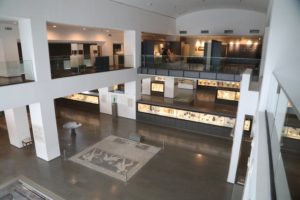
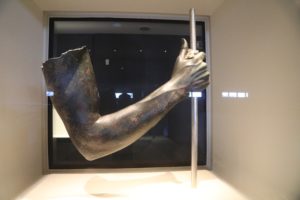
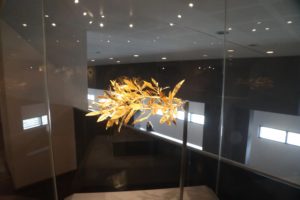

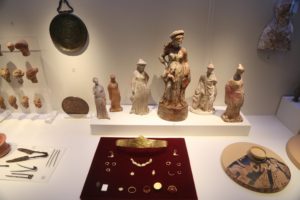

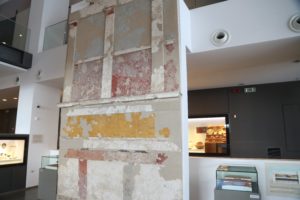
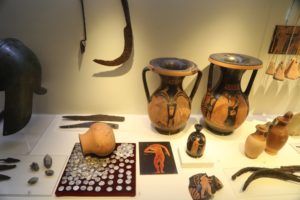
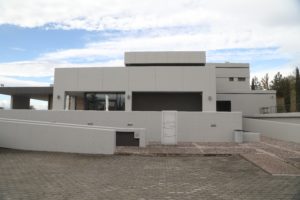
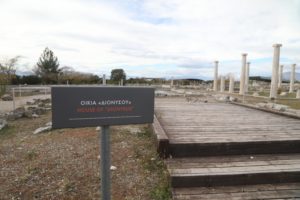

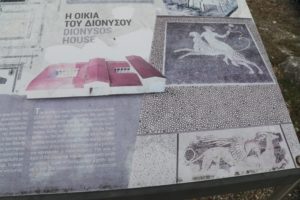
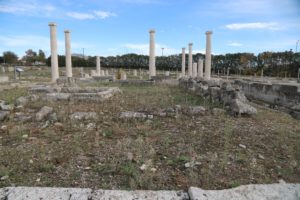
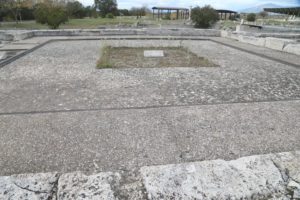
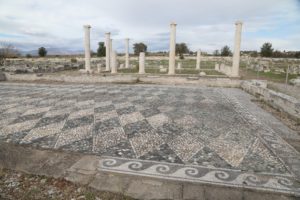
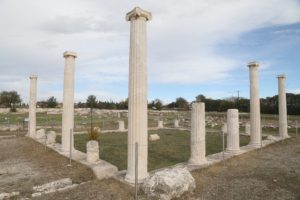
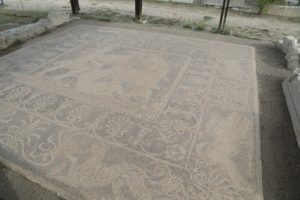
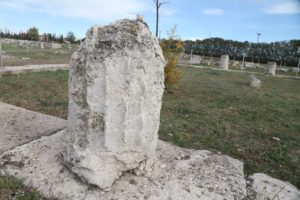
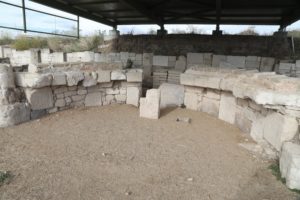
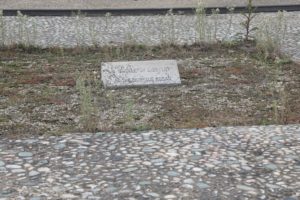
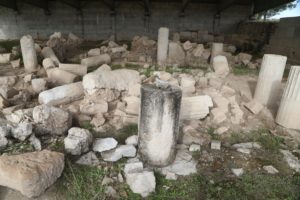
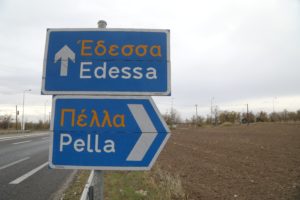
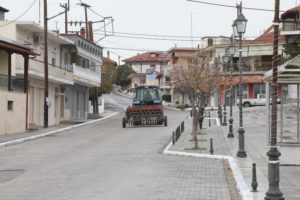


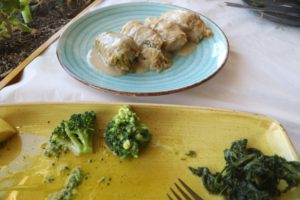
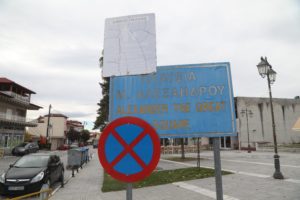
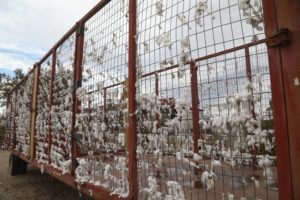
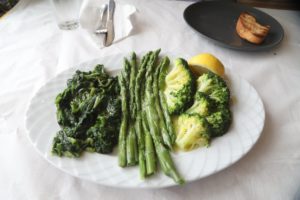
David, Kristof & I immensely enjoyed talking with you & tasting through the PELLA vertical, plus SANNA SB. Your tasting notes are superb! Thank you for joining us in the midst of a busy vineyard, with noisy tractors & workers coming & going. Your encyclopedic knowledge of all things Napa, as well as the nitty gritty of winemaking, made conversation a pleasure. Hope we can taste wine together again. Cheers! Jennifer Anderson
Thanks Jennifer 🙂
Likewise – I will send you some photos when I make it to Pella Greece. Could be later this year but most likely next year!
We thoroughly enjoyed the updated content about your trip to Pella Greece, including photos and a restaurant recommendation! And we appreciate the way you unceasingly, energetically update tasting notes for all the wineries you review, including our label. Cheers!–Jennifer & Kristof